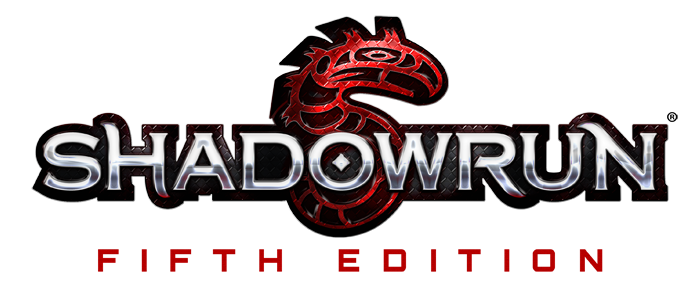Well, when a Mommy Die and a Daddy Die love each other very much …
No, that’s a subject for another time. What I wanted to talk about here were dice pools. Shadowrun rules are built around figuring out how many dice to roll and then rolling those suckers. As I mentioned in the previous development blog post, many of the core mechanics of Shadowrun, Fourth Edition remain largely in place in Fifth Edition. This means that the first thing you do to get your dice pool (in most instances) is add a skill to a linked attribute. That will continue to be the case for Shadowrun, Fifth Edition (in fact, it’ll happen more often, such as in Matrix actions, but that’s a topic for another post).
Where things change is what gets added to the pool. One of the priorities the design team had for Shadowrun, Fifth Edition was to put the character and their abilities at the center of things as much as possible. Which means that if they want high dice pools, they should have a high skill rating and/or high attribute. Simply put, if you have a high skill rating, you should generally have higher dice pools than someone with a lower skill rating
So what do we need to change to make this happen? One thing we focused on was skill caps. We felt that putting skill caps at 6, as Fourth Edition did, forced players to look for other ways to build their dice pools besides enhancing their skills. We decided to raise skill caps to 12, giving characters more room to grow. We didn’t want to make it easy to get there, though—the Karma costs of getting that final level are very high, because we wanted it to be clear that getting a character to that level was a sign of real commitment and dedication. Not to mention survivability.
As we kept talking about how to focus on characters’ attributes and skills, the conversation kept coming around to gear. When skills are capped—or even before then—gear is a vital tool for building your dice pools. Maybe too vital. We love our Shadowrun toys, but we felt wary about them being too dominant in game play. So what could we do that might de-emphasize gear a little without making it toothless? We still want characters to have the thrill of buying a new toy and taking advantage of what it can do for them. How do we find the right balance?
The answer we came up with was limits. This is a concept that exists in Fourth Edition, namely in the Force of a spell. When you choose the Force of a spell, you are limiting the number of hits you can count from your Spellcasting Test. If we spread that concept, introducing different sorts of limits, then that was an area where gear could have an effect. If you want to have a big dice pool, you need to build up your skills and attributes; but if you want to be able to take full advantage of that dice pool, counting as many hits as possible, you need the right piece of gear.
Weapons in Fifth Edition have a statistic called Accuracy. This represents the limit imposed by that weapon, that is, the number of hits you can count when you roll your test. Got a sweet sniper rifle that can shoot the wings off a fly from a kilometer away? That’ll have a high Accuracy, and you’ll be able to use a whole bunch of hits from your dice pool when you make an attack with it. If, on the other hand, you’re stuck with a broken-down pistol with a cracked barrel, well, you could be one of the world’s great marksmen, but you’re still going to have trouble hitting the side of a barn with that thing. Then again, maybe you’re not built with a high skill in pistol, and a cheap, low Accuracy gun is just about right for what you roll.
The Accuracy stat gave us the chance to make gear have significant effects on the game without ballooning dice pools. But that wasn’t the only effect they have—when you add something like this to game infrastructure, the effects tend to show up in different places. Next time we’ll talk about some of the effects limits have on attribute balance and using Edge.






